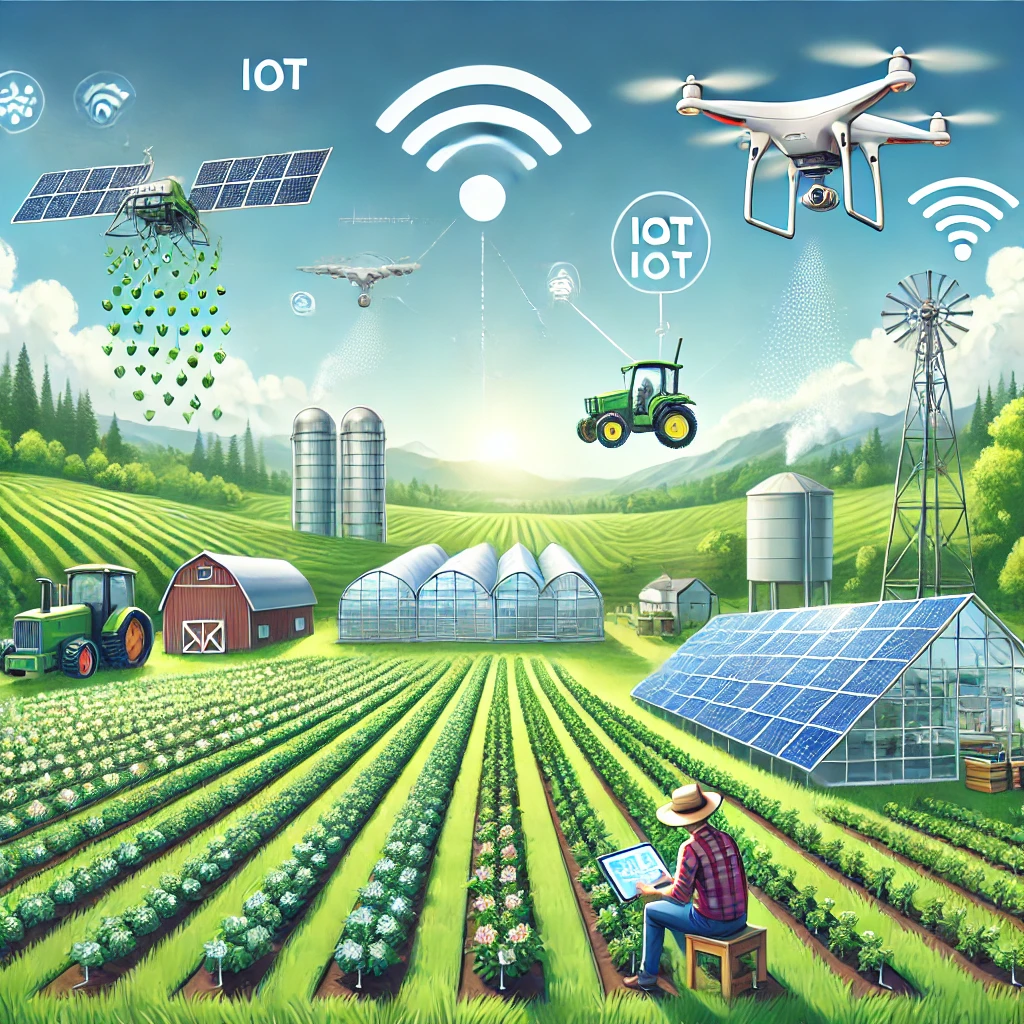
Introduction to IoT Smart Farming
In recent years, agriculture has seen a transformative shift with the introduction of the Internet of Things (IoT). This technology has redefined farming methods, enabling smarter and more sustainable practices. IoT smart farming for a sustainable future is not merely a concept but a growing reality, driven by the need to balance food production with environmental conservation.
The Concept of IoT Smart Farming
IoT smart farming integrates sensors, devices, and software to collect and analyze agricultural data. This system allows farmers to monitor and manage their crops, livestock, and equipment with unparalleled precision. By leveraging IoT technologies, smart farming promotes efficiency and reduces waste, making it a cornerstone for sustainable agriculture.
Why Sustainability Matters in Farming
Sustainability is no longer optional in modern farming. With a growing global population and decreasing arable land, the pressure to produce more food with fewer resources is immense. IoT smart farming for a sustainable future addresses this challenge by optimizing resource usage and minimizing environmental impact.
- Resource Management: IoT devices ensure efficient water, fertilizer, and pesticide use.
- Environmental Protection: Reducing chemical runoff and soil degradation helps maintain ecosystem balance.
Key Components of IoT Smart Farming
1. Sensors and Data Collection
IoT sensors play a pivotal role in smart farming by collecting real-time data. These sensors monitor soil moisture, temperature, humidity, and other critical factors. For instance:
- Soil Sensors: Detect nutrient levels, ensuring precise fertilization.
- Weather Sensors: Predict climatic changes to optimize planting schedules.
2. Automation and Smart Equipment
Automation is another cornerstone of IoT smart farming. Drones and automated tractors equipped with IoT devices perform tasks such as planting, watering, and harvesting with minimal human intervention.
3. Data Analysis and Decision-Making
Collected data is analyzed through advanced algorithms to offer actionable insights. Farmers receive recommendations on irrigation schedules, pest control measures, and harvest timings.
Applications of IoT Smart Farming
1. Precision Agriculture
Precision agriculture focuses on optimizing crop yield by monitoring and managing field variability. IoT systems provide site-specific information, allowing targeted interventions. This reduces waste and maximizes productivity.
2. Livestock Monitoring
IoT technology is also transforming livestock farming. Wearable devices for animals monitor health, track movements, and ensure optimal living conditions. This enhances animal welfare while boosting productivity.
3. Greenhouse Automation
IoT-powered greenhouses maintain ideal growing conditions automatically. Sensors and actuators control temperature, humidity, and lighting, ensuring consistent crop quality.
Advantages of IoT Smart Farming for Sustainability
1. Reduced Resource Wastage
IoT systems optimize water and fertilizer use, reducing wastage significantly. Smart irrigation systems, for instance, water crops only when needed.
2. Enhanced Productivity
By providing real-time data and automation, IoT technologies increase crop yield and quality. This ensures farmers meet growing food demands sustainably.
3. Lower Environmental Impact
IoT smart farming for a sustainable future reduces carbon footprints through efficient machinery usage and minimal chemical application.
Challenges in Adopting IoT Smart Farming
1. High Initial Costs
Implementing IoT systems requires significant investment. Sensors, devices, and software can be expensive for small-scale farmers.
2. Data Security Concerns
As IoT systems rely heavily on data, cybersecurity becomes a critical issue. Farmers need to protect sensitive information from breaches.
3. Limited Accessibility
In remote areas, limited internet connectivity hinders the adoption of IoT smart farming technologies.
Overcoming Challenges
1. Government Support
Subsidies and financial aid can help farmers afford IoT technologies. Governments can also invest in improving rural internet infrastructure.
2. Collaborative Efforts
Private-public partnerships can drive innovation and lower costs. Collaborations between tech companies and farmers can ensure accessible and user-friendly IoT solutions.
3. Training and Education
Educating farmers on the benefits and usage of IoT systems is crucial. Training programs can bridge the knowledge gap, enabling effective technology adoption.
Real-Life Examples of IoT Smart Farming
1. Smart Irrigation Systems
In India, IoT-enabled irrigation systems have revolutionized water management, saving millions of liters annually.
2. Vertical Farming with IoT
Vertical farms in urban areas use IoT technologies to monitor and control growing conditions, maximizing space and resources.
3. Livestock Health Monitoring
Dairy farms in Europe use IoT devices to monitor cow health, improving milk production and animal welfare.
The Future of IoT Smart Farming
1. Integration with Artificial Intelligence (AI)
The combination of IoT and AI will take smart farming to the next level. AI algorithms can predict crop diseases and recommend preventive measures.
2. Blockchain for Transparency
Blockchain technology can complement IoT systems by providing transparent supply chains. This ensures accountability and builds consumer trust.
3. Expansion to Small-Scale Farmers
Affordable IoT solutions tailored for small-scale farmers will democratize access, promoting global sustainability.
Conclusion: A Path to Sustainable Agriculture
IoT smart farming for a sustainable future is not just about advanced technology—it’s about creating a harmonious balance between productivity and conservation. By embracing IoT innovations, farmers can ensure food security, protect the environment, and meet the challenges of a growing world.
The journey towards sustainability begins with smart decisions today. Are you ready to transform the future of agriculture?
Read more :
- https://rmm.abyadi.com/iot-enhances-industrial-efficiency-in-smart-factories/
- https://rmm.abyadi.com/iot-trends-shaping-connected-world/
- https://rmm.abyadi.com/iot-is-transforming-smart-living/